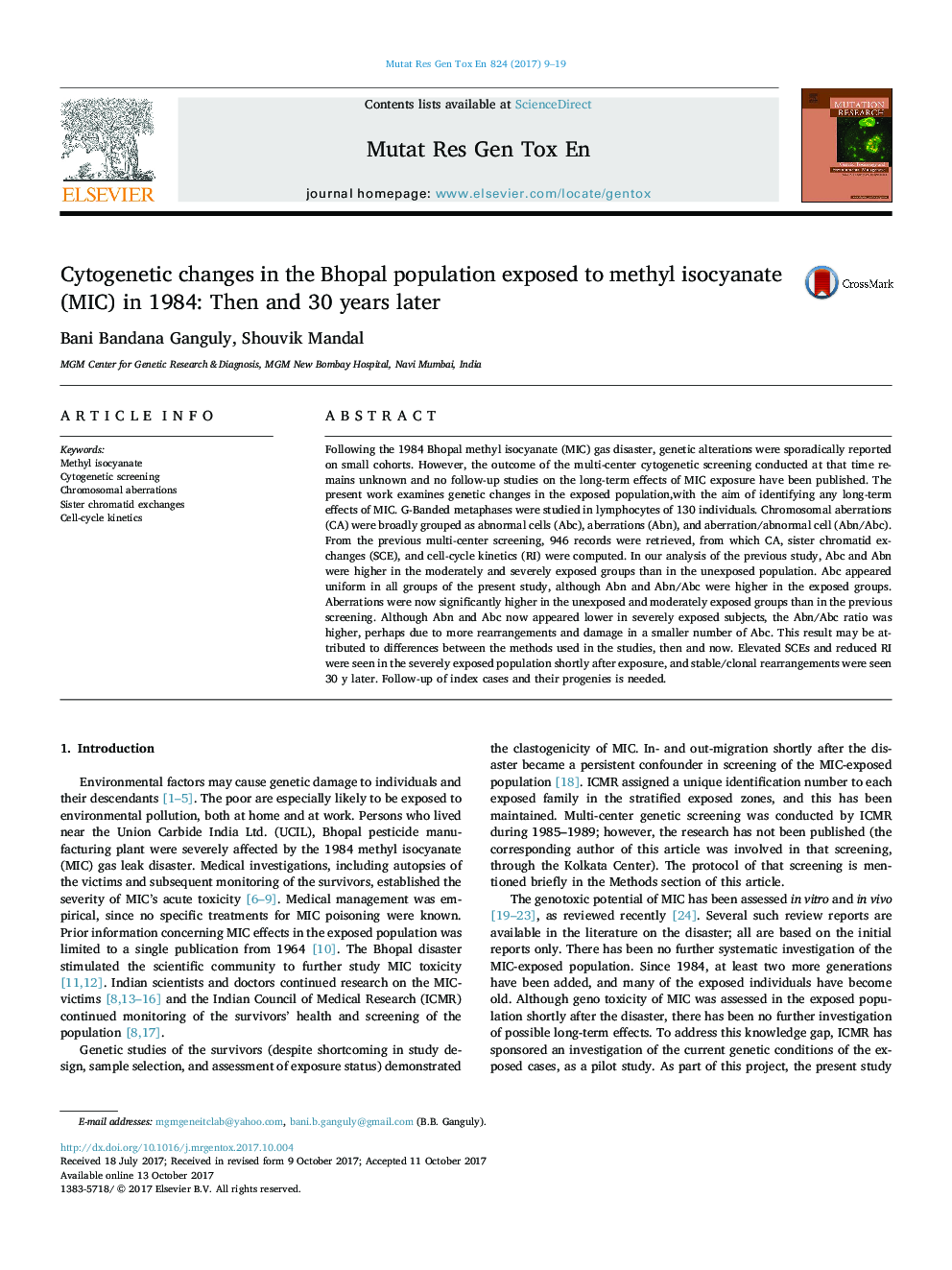| Article ID | Journal | Published Year | Pages | File Type |
|---|---|---|---|---|
| 5528726 | Mutation Research/Genetic Toxicology and Environmental Mutagenesis | 2017 | 11 Pages |
â¢First and only genetic analysis carried out from the multi-center genetic screening program conducted shortly after MIC-disaster.â¢First report on large sample size collected following a uniform screening protocol.â¢First follow up study of genetic changes 30-years post disaster.â¢First genetic report on acquisition of clonal stable aberrations.â¢Recommends follow up of the carriers of stable aberrations and G-banding screening on larger population.
Following the 1984 Bhopal methyl isocyanate (MIC) gas disaster, genetic alterations were sporadically reported on small cohorts. However, the outcome of the multi-center cytogenetic screening conducted at that time remains unknown and no follow-up studies on the long-term effects of MIC exposure have been published. The present work examines genetic changes in the exposed population,with the aim of identifying any long-term effects of MIC. G-Banded metaphases were studied in lymphocytes of 130 individuals. Chromosomal aberrations (CA) were broadly grouped as abnormal cells (Abc), aberrations (Abn), and aberration/abnormal cell (Abn/Abc). From the previous multi-center screening, 946 records were retrieved, from which CA, sister chromatid exchanges (SCE), and cell-cycle kinetics (RI) were computed. In our analysis of the previous study, Abc and Abn were higher in the moderately and severely exposed groups than in the unexposed population. Abc appeared uniform in all groups of the present study, although Abn and Abn/Abc were higher in the exposed groups. Aberrations were now significantly higher in the unexposed and moderately exposed groups than in the previous screening. Although Abn and Abc now appeared lower in severely exposed subjects, the Abn/Abc ratio was higher, perhaps due to more rearrangements and damage in a smaller number of Abc. This result may be attributed to differences between the methods used in the studies, then and now. Elevated SCEs and reduced RI were seen in the severely exposed population shortly after exposure, and stable/clonal rearrangements were seen 30 y later. Follow-up of index cases and their progenies is needed.
Graphical abstractDownload high-res image (211KB)Download full-size image
